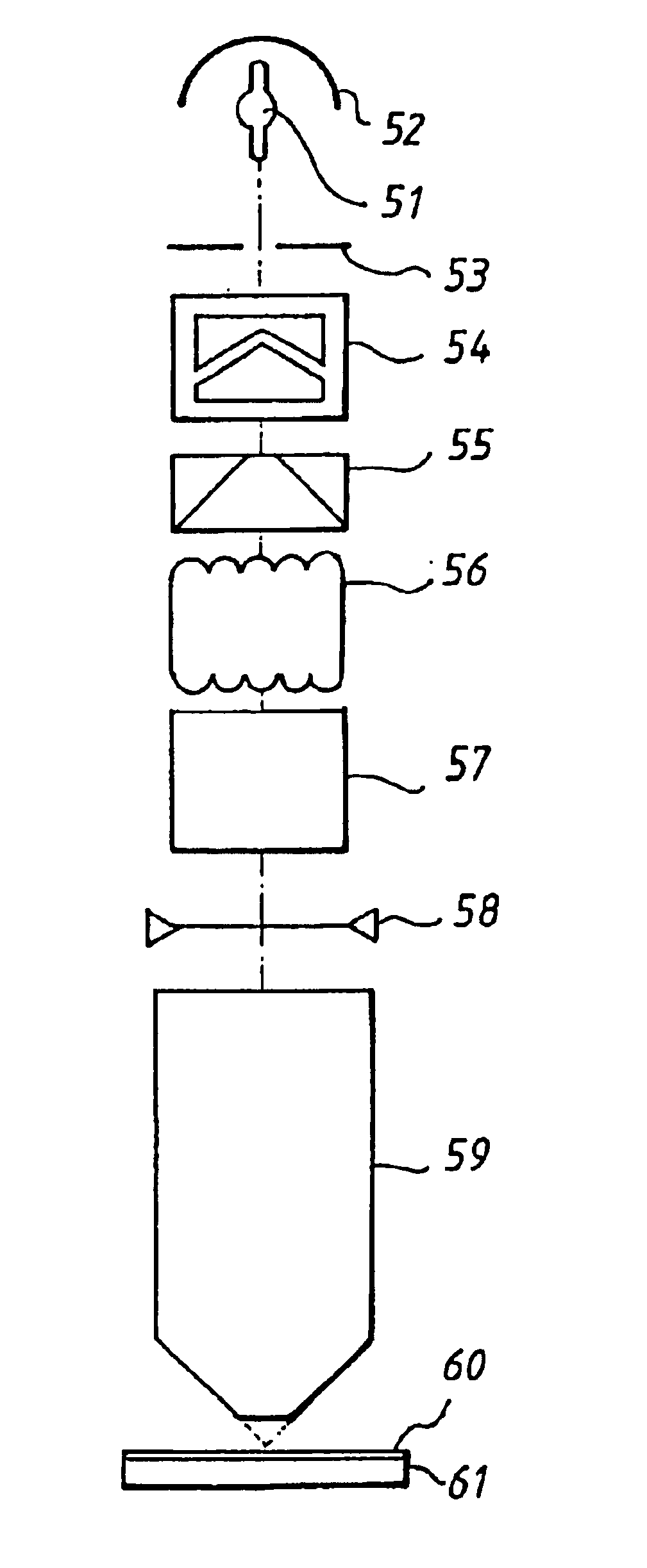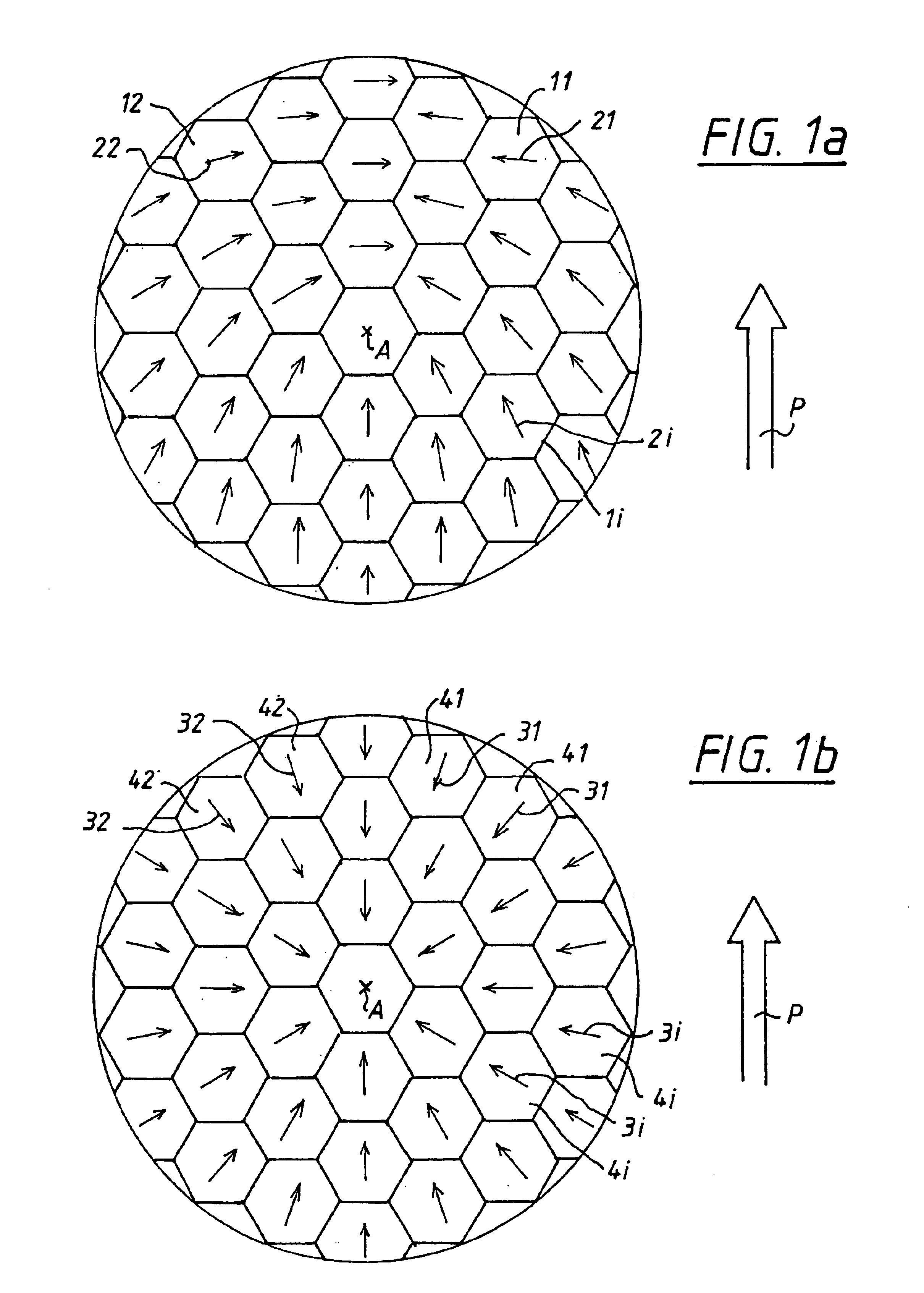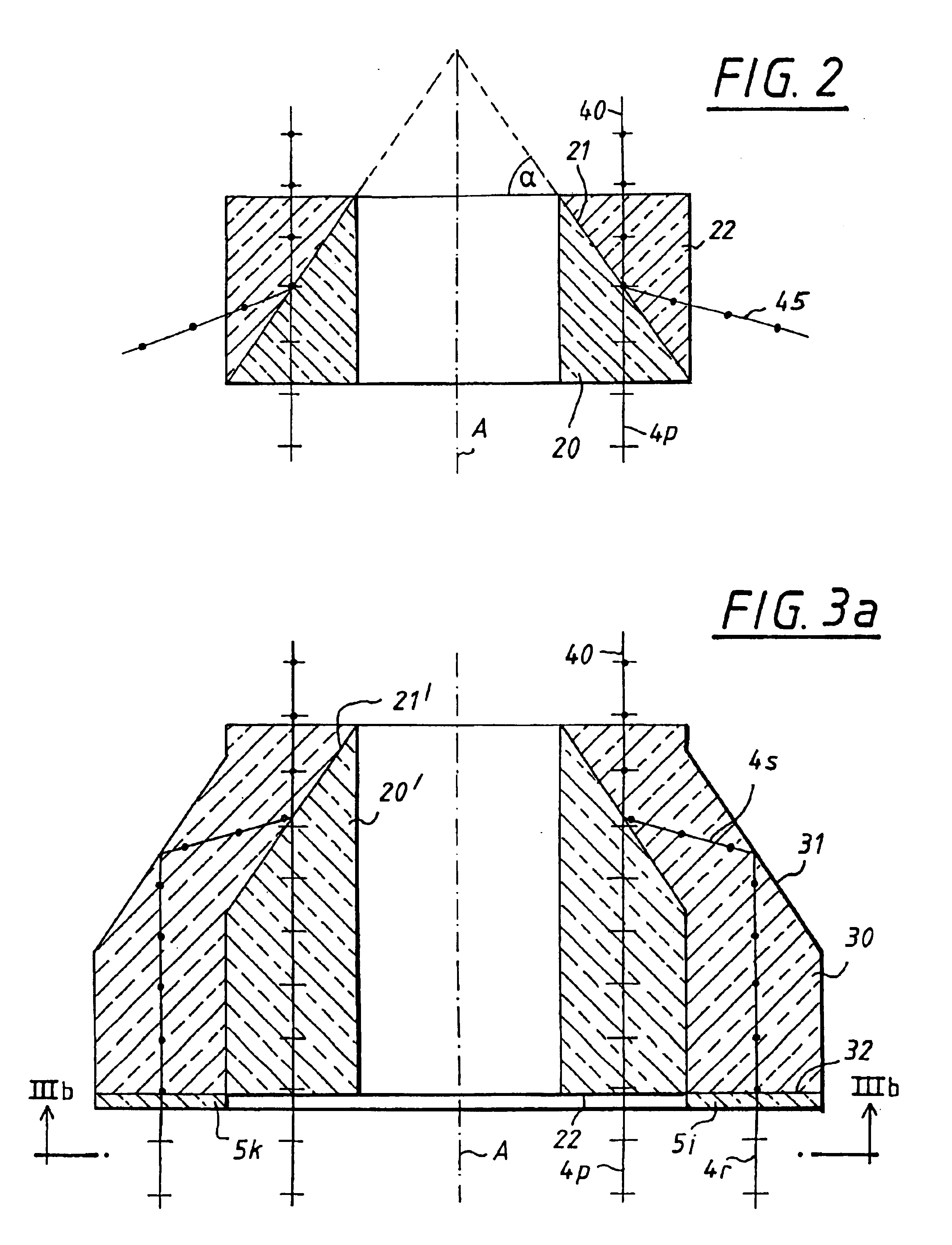Radial polarization-rotating optical arrangement and microlithographic projection exposure system incorporating said arrangement
a technology of rotational polarization and exposure system, which is applied in the field of optical arrangement, can solve the problems of high light loss, low efficiency, and low efficiency, and achieve the effect of low loss, low scattering light, and high apertur
- Summary
- Abstract
- Description
- Claims
- Application Information
AI Technical Summary
Benefits of technology
Problems solved by technology
Method used
Image
Examples
Embodiment Construction
[0039]A polarization-rotating arrangement according to the invention is shown in FIGS. 1a and 1b as it is suitable especially in combination with a honeycomb condenser for the conversion of linearly polarized light. This arrangement is especially suited for lasers as a light source. The beam cross section is subdivided into a multiplicity of facets (11, 12, 1i) which is, in each case, made of a half-wave plate of birefringent material. Each facet 1i corresponds to a honeycomb element of the honeycomb condenser. The facets 1i are preferably cemented to the honeycomb or placed in wringing contact therewith. For extreme radiation loads, the facets can be separately held and coated to prevent reflection. The honeycomb condensers conventional for microlithographic projection exposure systems have about 102 honeycomb elements and the number of the facets is the same.
[0040]The main axes (21, 22, 2i) of the facets (11, 1i) are each aligned in the direction of the angle bisector between the ...
PUM
 Login to View More
Login to View More Abstract
Description
Claims
Application Information
 Login to View More
Login to View More - R&D
- Intellectual Property
- Life Sciences
- Materials
- Tech Scout
- Unparalleled Data Quality
- Higher Quality Content
- 60% Fewer Hallucinations
Browse by: Latest US Patents, China's latest patents, Technical Efficacy Thesaurus, Application Domain, Technology Topic, Popular Technical Reports.
© 2025 PatSnap. All rights reserved.Legal|Privacy policy|Modern Slavery Act Transparency Statement|Sitemap|About US| Contact US: help@patsnap.com



